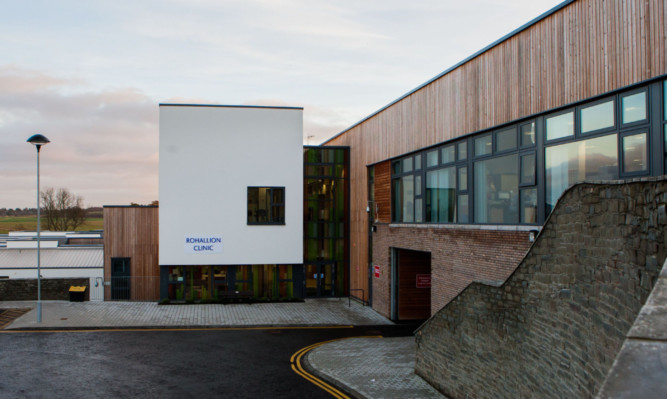Health chiefs have been slammed after it emerged there were 22 instances of patients absconding from a Perth psychiatric hospital last year.
While the majority of disappearances from Murray Royal involved patients from the general psychiatry wards, seven were from the more secure Rohallion unit.
They included killer Paul Brownlie, a schizophrenic who knifed a man to death in a drug-fuelled attack in East Lothian 16 years ago. Brownlie was treated in the State Hospital at Carstairs for a time before being transferred to Perth.
Last May he managed to give escorts the slip while on a trip from the hospital.
He travelled to Edinburgh before being apprehended two days later.
The figures were revealed following a Freedom of Information request to NHS Tayside.
Between January and November 2014, a total of 15 patients absconded from the general psychiatry wards on at least one occasion.
The health board also revealed that between January 1 and December 18 there were seven instances, involving five patients, from Rohallion.
The board said all patients who absconded were located and returned to the hospital.
While the number of absconders is fewer than the previous year, when at least 26 patients went missing, politicians expressed concern at the continued disappearances.
Councillor Alexander Stewart, a member of Perth and Kinross Council’s community safety committee, said there was a risk of the public losing confidence in the facility.
Mr Stewart said: “Absconding from hospital is a significant health and security issue but when the facility is a psychiatric unit there could be more serious repercussions.
“Perth’s Murray Royal Hospital’s record has been questioned in the past and security was reviewed but it would still appear that it is an ongoing risk.
“These episodes have considerable adverse effects on the patient, their family members and the wider community especially when the abscondee is a forensic patient who is legally detained for their own security and wellbeing.
“The public must have confidence that NHS Tayside is tackling this issue as a priority otherwise the facility loses its credibility as a provider of a safe and secure environment for those suffering from mental health issues.”
Liz Smith MSP said: “The fact that vulnerable patients continue to abscond from hospital is concerning.
“The public will remain concerned about the significant number of patients absconding Rohallion and I will be seeking further assurances from NHS Tayside on this.
“NHS Tayside has a responsibility to guarantee patient safety.”
However a spokeswoman for NHS Tayside said many of the absconders had simply failed to return from a day out.
She said: “Incidents which are currently being recorded under the category of absconding are more likely to be a failure to return from an agreed time off the ward or out of the hospital.
“If staff are unable to locate the individual this may then be treated as a missing person.
“The majority of patients being treated at Murray Royal Hospital are not detained.
“The Rohallion Secure Care Clinic on the Murray Royal Hospital site has both low and medium secure facilities. Patients are sometimes required to attend other hospital or dental appointments off-site and it is also a routine part of their rehabilitation programme to have accompanied and unaccompanied visits outside of the hospital to education and work placements.
“The decision regarding whether a patient is allowed outside access is made based on a clinical assessment.”
